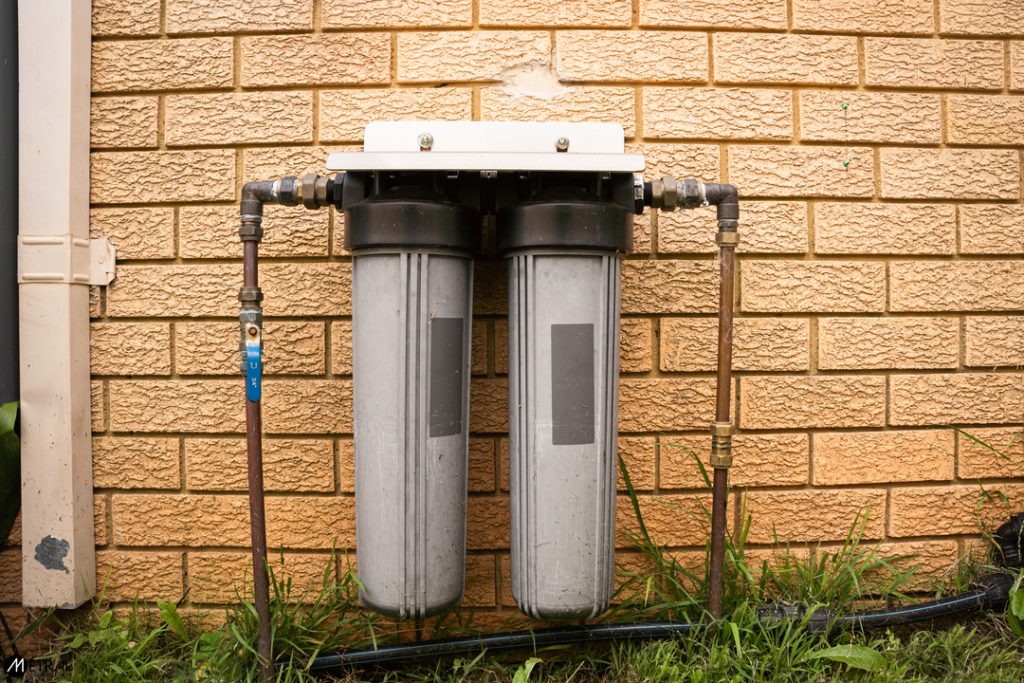When it comes to sourcing drinking water, many are now turning to eco-friendly measures. Which is where rainwater tanks come in. However, this often comes with the misconception that “Rainwater doesn’t need to be filtered.”
Rainwater is a great way to reduce pressure on the main water supply. However, it’s important to be weary of the many contaminants that are present. Which is where the rainwater filtration system comes in. Providing rainwater that’s safe to drink to your office or home
Explore this below:
So, How Does Rainwater Become Contaminated?
The truth is, there are many ways harvested rainwater can become contaminated. A common reason is from the pollutants that travel in the air like dust or smoke. The bacteria contamination however is the most concerning.
It’s also important to keep in mind that your property’s roof or gutter system can also contain many hazards. This is because materials like metal can contaminate your water. Within this system, there’s also a possibility for animal faeces to enter your rainwater supply. Not long ago, a story was published about a home owner finding a dead kangaroo in their water tank. The decaying corpse was a source for serious sickness that can come from drinking the water.
Along with this, the rainwater tank can also be responsible for any contamination. This can arise as a result of a lack of maintenance, such as steel tanks which can corrode over time and cause high levels of iron oxide entering the water. Even concrete tanks can leech lime into the water making it extremely bitter to taste..
Know the Health Risks of Not Filtering your Rainwater
We know that drinking unfiltered rainwater can be harmful. However it’s important to understand the full scope of the health risks, so you can make an informed decision.
See what this looks like below:
- Gastrointestinal issues: Not filtering rainwater can put the digestive system at risk. This is because the contaminants present cause bacterial problems and viruses.
- Respiratory Problems: If there’s mould and dust particles in the rainwater, this can cause allergies and other issues. This puts individuals with asthma or similar health conditions at risk. Some dangers that may be in the water can’t be passed on through water consumption but actually come with inhaling water vapours like Legionnaires disease.
- Skin irritations: Rainwater can be harsh due to a natural or artificial contamination and cause skin irritation even to the point where skin can break open from continued exposure to unfiltered or untreated water. Which means that those with existing skin conditions like eczema can be at a higher risk.
*Have you had unfiltered rainwater for years without issues? The truth is, these contaminants can affect your health for the long term. Contact Transform Water to learn more about rainwater filtration.
How does the rainwater filtration system clean water?
The right water filter can remove many contaminants. This ranges from sediment, debris and other impurities. However, you may be wondering, “How does the rainwater filtration process work?”
The most common ways water is treated for us are:
- Pre-filtration: This stage is key in preventing any damage to the rainwater tank. It involves the removal of outside elements, such as leaves, twigs and dirt. This also includes regular tank cleaning.
- Main filtration: There are a wide range of rainwater filters that have different purposes. For example, the sediment filters are targeted to remove dirt and debris. On the other hand, the UV light filter is used to target and kill harmful bacteria. All of these work to keep your drinking water safe. There’s also chemical treatment among other treatment options to assist.
- 3.Post-filtration: As the final stage, this ensures that all the water has been cleaned further. This process involves removing all final pollutants for E.G the left-over sediment Usually, it’s more filtration but at a finer level than previous stages.
DIY Rainwater Filter: The Boiling Water Alternative
Do you find yourself searching, “How to filter rainwater for drinking?” We know that in this case, many prefer DIY measures like boiling water. Although this may seem tempting, the truth is this can have many downsides.
See our side by side comparison below:
Rainwater Filter System
- Time Efficient: Have peace of mind with this existing rainwater filter integration, providing filtered rainwater whenever you need it.
- Highly Effective: The system is designed to target the full scope of contaminants, from chemicals and bacteria to heavy metals and other viruses.
- Hassle-Free: The right filtration system makes achieving clean rainwater in the future much easier.
Boiled Rainwater (DIY):
- Time Consuming: Boiling water each time can disrupt your day-to-day routine, offering an inconvenient solution.
- Partially Effective: Rainwater can contain contaminants from gutters and the tank itself. From chemicals to heavy metals, these pollutants cannot be fully removed by boiling. Boiling water will not remove even sediment greater than 40 micron. Remember, 40 micron is the limit to what the human eye can see. Any less than this, (also the diametre of a human hair) and there is no visible sign of it.
- Higher Expenses: Continuously boiling water can increase your energy use, leading to higher expenses over time.
How To: Take Action to Upgrade Your Rainwater System
We know that rainwater tanks offer a wide range of benefits. From providing an eco-friendly, sustainable to future-forward method of getting drinking water. At Transform Water, we pride ourselves on supplying and installing the right rainwater tank system which includes filtration. Whether you have small, to large scale rainwater needs, there’s no guess work involved. Just experience and the right advice





